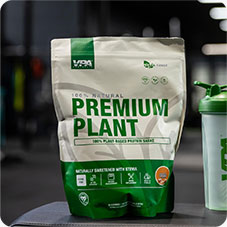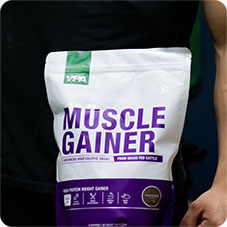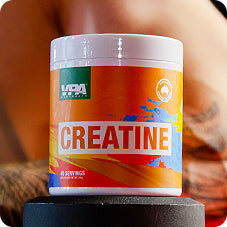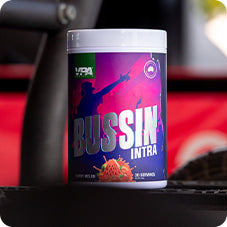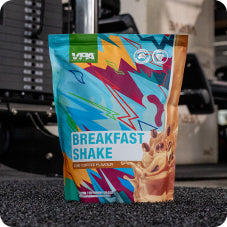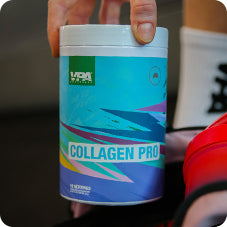Your Cart is Empty
Your DNA and Your Fitness
May 15, 2019 6 min read

So what does your DNA say about you, your fitness, exercise and overall health? We know that environmental and social factors influence the person that we are in conjunction with our DNA. We are fortunate enough to have new research constantly emerging about DNA and exercise. This allows us to learn more about the way we should exercise as an individual rather than as a population. It has been found that exercise actually influences our DNA and the way our genes are expressed. Consequently, we all respond differently to physical activity. We are not all the same. Therefore we cannot all eat and exercise the same way and expect to get the same results. We need to change our work out and diet plans according to our DNA …yes this is the exciting direction of the future! Soon it won’t be trial and error to find out what works for us, but a simple DNA test (with of course always also taking into consideration our enjoyment too). No more working our ass off and not getting results.
First of all it is important to understand how exercise changes our DNA. Small sections of DNA are called genes, which all encode different genetic characteristics (eg. the colour of your hair, or hereditary factors such as naturally having higher cholesterol). However, some genes are not always active (“switched on”) but actually depend on the signals they receive from the body. It has become clear that the reason why exercise is so beneficial for our health is because of the way they “switch off” or “quieten” the activity of certain genes which influence blood pressure, cholesterol and fat storage leading to better health outcomes. The mechanism that is does this through though has been in question. Epigenetics is the study of how genes are influenced (keeping in mind our DNA doesn’t change, just the way the genes are expressed at a certain point in time). Recently epigenetics surrounding exercise has been investigated. On the outside of genes there are little methyl groups which act in the same way as a light switch. When scientists talk about methylation patterns they are referring to whether these methyl groups are “showing” and are present or if they are curled inwards and seen to be ‘hiding.” When these methyl groups are “showing,” they make the body more likely to respond to certain signals (like having more or less light switches for one room). Methylation patterns are affected by numerous factors including lifestyle, diet and pollutants. In turn, this affects our overall health and risk of obtaining certain diseases. Exercise has now been proven to change the methylation pattern in human skeletal muscle and adipose (fat) tissue. This therefore potentially affects muscle function (muscle gains) and adipocyte (fat cell) metabolism. Specific genes have been identified as having significant changes in methylation patterns in those who undertake exercise on a long term basis. This explains the reason why we see better health outcomes in those who regularly exercise, in comparison to those who don’t.
DNA affects countless factors in our lives, not just the way we look but even the way we metabolise nutrients. Therefore it is best for us to understand our genes the best we can to lead to greater health and longetivity. Just because we have genes that determine one thing (eg. having fair skin) doesn’t mean we can’t adjust the outcome (eg. staying out the the sun to prevent becoming sunburnt). The same goes for the way we should each take on different training methods to suit our physical strength and weaknesses influnced by our genes. Although it may be hard to believe, we can already test some of these genes through a simple mouth swap. An allele is a variation of a gene which makes us all different. This aims to help us design our lifestyle in a way that we will get the maximum results, or the results we most desire. Here are a few examples of the way different genotypes (version of genes) can affect us:
–Vitamin D Recetor(Taq1); Vitamin D is widely known to assist calcium and phosphorous levels. The CC genotype may be linked with increased bone density and muscle growth when undertaking strength traning. However these individuals with the CC genotype who do not undertake exercise, generally have higher blood glucose levels. Other genotypes just show a regular response to exercise, although more research required.
–Alpha Actinin 3(ACTN3); is associated with fast twitch skeletel muscle fibre structure. The CC genotypes are likely to benefit from explosive training (eg. short sprints). Conversely, the TT genotype individuals benefit more from endurance training.
–Interleukin-6 (IL6); is part of the inflammatory repair process by stimmulating an immune response when exercising. The GG genotype is linked to lower levels of inflammation and faster recovery time. The CC genotype however leads to elevated inflammation and therefore longer rest periods between training sessions should be considered. Note: C Reactive Protein genotypes also influence this inflammatory factors.
-Collagen 5 Alpha 1 (COL5A1); is related to the Alpha-1 chain of Type V collagen. The TT genotype although has been found to be linked with higher endurance capacity, it is also linked associated with increased risk of tendenopathy. The CC genotype generally creates a larger range of motion and therefore has a lower risk of tendenopathies. Note: Growth Differentiation Factor 5 genotypes are also associated with tendanopathy and osteoarthitis risks.
-Apolipoprotein A-II; this protein is present in HDLs (good cholesterol). Those with the CC genotype generally have a higher BMI compared to TT genotypes who are less likely to be associated with with an increase in BMI even in the presence of elevated levels of saturated fat consumption. Therefore those with the CC genotype need to be signiicantly more aware of their fat consumption.
–Glutathione S-transferase M1 T1(GSTM1, GSTT1);is involved in the process of removing toxins and free radicals. The presence of the I-allele ensures the gene is functioning correctly. However the absents/deletion of the I-allele increases the free radicals and leads to increased fatigue and slower recovery. If you are in this group of individuals you may need to give your body more recovery time and adjust your diet.
-Angiotensin Converting Enzyme (ACE); is associated with muscle fibres. Individuals who have the I-allele section have a larger volume of slow twitch muscle fibres and more likely to have greater aerobic capacity. Therefore endurance and high repetition weight training is recomended. Those who do not carry this I-allele have reduced endurance performance due to a reduction in glucose uptake or oxidation in working muscle. Power based training is suggested along with blood pressure monitoring (eg. sport watches that detect your BP during exercise ). There is a chance of developing insulin sensitivity due to eating refined carbohydrates in this group.
References
Ling, C., & Rönn, T. (2014). Epigenetic adaptation to regular exercise in humans. Drug discovery today, 19(7), 1015-1018.
Rönn, T., Volkov, P., Davegårdh, C., Dayeh, T., Hall, E., Olsson, A. H., … & Jones, H. A. (2013). A six months exercise intervention influences the genome-wide DNA methylation pattern in human adipose tissue. PLoS Genet, 9(6), e1003572.
Yasuda, N., & Yasuda, M. (2014). Relationship between fitness levels and whole body DNA oxidation following 2 h of cycling exercise in moderately trained men. Journal of Science and Medicine in Sport, 18, e20.
De Geus, E. J., Bartels, M., Kaprio, J., Lightfoot, J. T., & Thomis, M. (2014). Genetics of regular exercise and sedentary behaviors. Twin Research and Human Genetics, 17(04), 262-271.
Vaughan, D., Brogioli, M., Maier, T., White, A., Waldron, S., Rittweger, J., … & Flück, M. (2016). The Angiotensin Converting Enzyme Insertion/Deletion Polymorphism Modifies Exercise-Induced Muscle Metabolism. PloS one, 11(3), e0149046.
Desai, N. K., Ooi, E. M., Mitchell, P. D., Furtado, J., & Sacks, F. M. (2015). Metabolism of apolipoprotein A-II containing triglyceride rich ApoB lipoproteins in humans. Atherosclerosis, 241(2), 326-333.
Agurs-Collins, T., Iversen, E. S., Perna, F., & Baljinnyam, B. (2013). Abstract A49: GSTM1, GSTT1, GST polymorphisms, physical activity, and breast cancer risk in premenopausal women of European ancestry.
Contreras-Sesvold, C., Revenis, B. D., O’Connor, F. G., & Deuster, P. A. (2015). Association of Plasma Heat Shock Protein 70, Interleukin 6, and Creatine Kinase Concentrations in a Healthy, Young Adult Population. Journal of biomarkers, 2015.
Massidda, M., Toselli, S., & Calo, C. M. (2015). Genetics and Artistic Gymnastics: 2014 Update. Austin Biomark Diagn, 2(1), 1015.
Also in Featured

VPA x Muscle Hut
April 10, 2024 1 min read
VPA proteins and supplements are stocked at Muscle Hut. Muscle Hut is among our top wholesalers who are always fully stocked up with VPA products. Get on our wholesale program today.
Read More
VPA Australia Teams Up with Renowned Artist Tracey Keller for Limited Edition Shaker
March 12, 2024 2 min read
Discover the limited edition shaker collaboration between VPA Australia and renowned artist Tracey Keller. Shop now for this exclusive product!
Read More
The Power of the Morning Sun: A Natural Boost for Your Well-being
March 08, 2024 4 min read
Discover the health benefits of morning sunlight, including immune system boost, mood enhancement, Circadian Rhythm regulation, blood pressure reduction, and weight loss correlation. Get tips for safe sun exposure and more. Read on!
Read More Recent Articles
- VPA x Muscle Hut
- VPA Australia Teams Up with Renowned Artist Tracey Keller for Limited Edition Shaker
- The Power of the Morning Sun: A Natural Boost for Your Well-being
- Sweat Together, Stay Together: Valentine's Day Fitness Gift Ideas
- Mind & Body Reboot: Your Ultimate Detox Guide
- Building Healthy Habits: Say Goodbye to the "All or Nothing" Approach
- What are Somatic Workouts?
- Importance of Diaphragmatic Breathing
- Welcome to Caity G’s Bodybuilding Journey!
- Success with SMART goal setting





